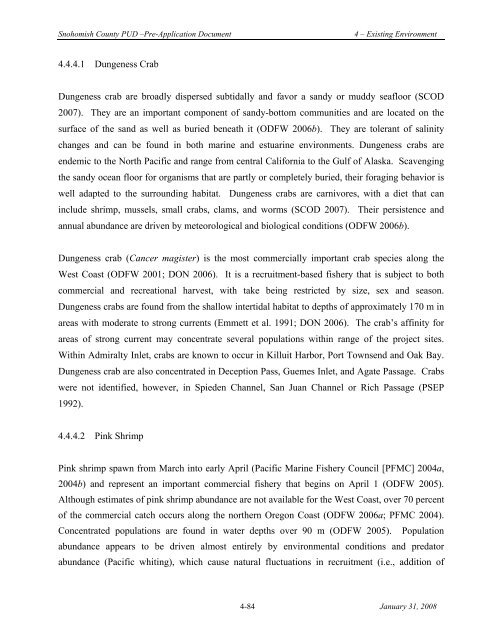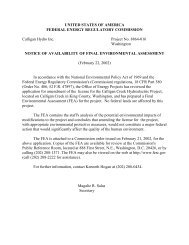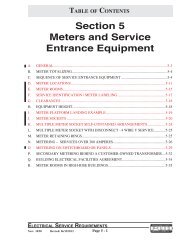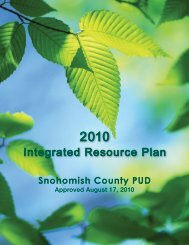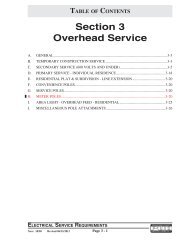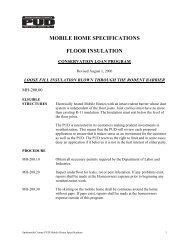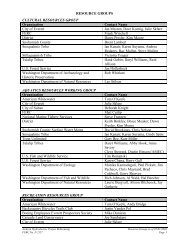Tidal_PAD_V1_Sec4.pdf - Snohomish County PUD
Tidal_PAD_V1_Sec4.pdf - Snohomish County PUD
Tidal_PAD_V1_Sec4.pdf - Snohomish County PUD
Create successful ePaper yourself
Turn your PDF publications into a flip-book with our unique Google optimized e-Paper software.
<strong>Snohomish</strong> <strong>County</strong> <strong>PUD</strong> –Pre-Application Document<br />
4 – Existing Environment<br />
4.4.4.1 Dungeness Crab<br />
Dungeness crab are broadly dispersed subtidally and favor a sandy or muddy seafloor (SCOD<br />
2007). They are an important component of sandy-bottom communities and are located on the<br />
surface of the sand as well as buried beneath it (ODFW 2006b). They are tolerant of salinity<br />
changes and can be found in both marine and estuarine environments. Dungeness crabs are<br />
endemic to the North Pacific and range from central California to the Gulf of Alaska. Scavenging<br />
the sandy ocean floor for organisms that are partly or completely buried, their foraging behavior is<br />
well adapted to the surrounding habitat. Dungeness crabs are carnivores, with a diet that can<br />
include shrimp, mussels, small crabs, clams, and worms (SCOD 2007). Their persistence and<br />
annual abundance are driven by meteorological and biological conditions (ODFW 2006b).<br />
Dungeness crab (Cancer magister) is the most commercially important crab species along the<br />
West Coast (ODFW 2001; DON 2006). It is a recruitment-based fishery that is subject to both<br />
commercial and recreational harvest, with take being restricted by size, sex and season.<br />
Dungeness crabs are found from the shallow intertidal habitat to depths of approximately 170 m in<br />
areas with moderate to strong currents (Emmett et al. 1991; DON 2006). The crab’s affinity for<br />
areas of strong current may concentrate several populations within range of the project sites.<br />
Within Admiralty Inlet, crabs are known to occur in Killuit Harbor, Port Townsend and Oak Bay.<br />
Dungeness crab are also concentrated in Deception Pass, Guemes Inlet, and Agate Passage. Crabs<br />
were not identified, however, in Spieden Channel, San Juan Channel or Rich Passage (PSEP<br />
1992).<br />
4.4.4.2 Pink Shrimp<br />
Pink shrimp spawn from March into early April (Pacific Marine Fishery Council [PFMC] 2004a,<br />
2004b) and represent an important commercial fishery that begins on April 1 (ODFW 2005).<br />
Although estimates of pink shrimp abundance are not available for the West Coast, over 70 percent<br />
of the commercial catch occurs along the northern Oregon Coast (ODFW 2006a; PFMC 2004).<br />
Concentrated populations are found in water depths over 90 m (ODFW 2005). Population<br />
abundance appears to be driven almost entirely by environmental conditions and predator<br />
abundance (Pacific whiting), which cause natural fluctuations in recruitment (i.e., addition of<br />
4-84 January 31, 2008


